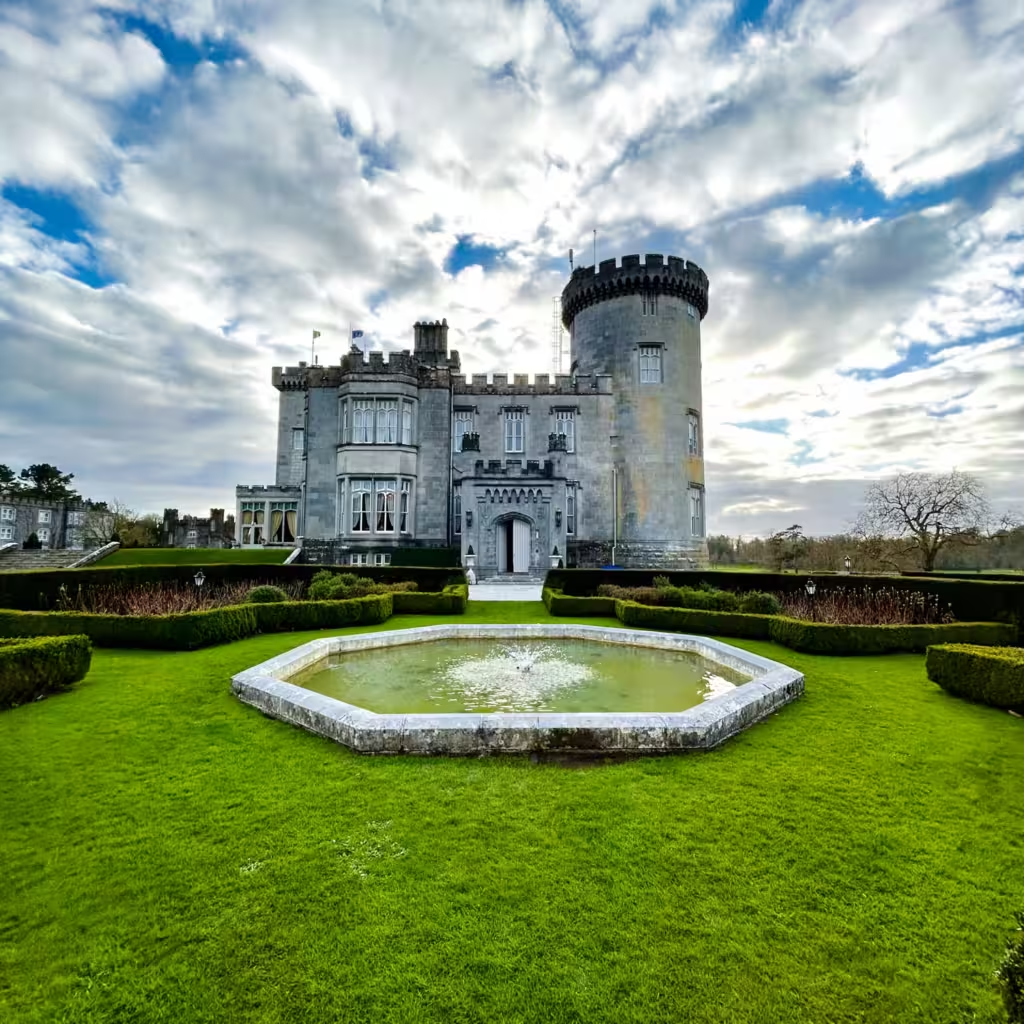
Ireland Travel Guide
This post may contain affiliate links, which means I’ll receive a commission if you purchase through my links, at no extra cost to you. Please read full disclosure for more information.
Thinking about visiting Ireland? You’re in for a little treat! Whether you’re drawn by the rugged coastlines, charming villages, ancient history, or just the idea of sipping a pint of Guinness in a cozy pub, the Emerald Isle truly delivers. I’ve traveled across Ireland, and I can tell you—it’s one of the most welcoming, low-stress destinations I’ve visited. This roundup pulls together everything you need to know to plan your dream Ireland trip, from when to go and where to stay, to must-see attractions and how to navigate the roads (yes, they drive on the left there!).

Best Time to go to Ireland
Ireland is a year-round destination, but if you’re hoping for the best mix of mild weather, longer daylight hours, and a lively atmosphere, aim for May through September. July and August are the warmest months (though still mild by most standards), but also the busiest. May and September strike a nice balance—fewer crowds, lower prices, and a better chance at that elusive Irish sunshine.
Winter can be cozy with fewer tourists and plenty of pub culture, but keep in mind that some smaller attractions and rural B&Bs may close for the season. Or it can be bone-chillingly damp and rainy. Hopefully the luck o’ the Irish will be with you!
Average Temperatures in Dublin
January 37° F / 46° F
April 41° F / 54° F
July 54° F / 68° F
October 45° F / 56° F
How to Get to Ireland
The main international gateway is Dublin Airport (DUB), with direct flights from many U.S., Canadian, and European cities. Shannon Airport (SNN) on the west coast is another option, especially if you’re heading straight into County Clare, the Wild Atlantic Way, or the Aran Islands.
From mainland Europe or the UK, you can also take ferries, but flying is usually the most efficient option.

The Various Regions of Ireland
(And Yes, There’s a Difference Between Ireland and Northern Ireland)
Before planning your route, it helps to understand the layout. The Republic of Ireland (simply referred to as Ireland) covers most of the island. Northern Ireland, part of the United Kingdom, occupies the northeast corner. They use different currencies (euros in Ireland, pounds in Northern Ireland) and have separate governments, but there’s no hard border—you can drive between the two freely.
Key regions in Ireland (not Northern Ireland) include:
- Dublin & the East Coast – Ireland’s capital is lively and walkable with great museums, pubs, and history. A few days here is a great way to start your trip.
- The West Coast / Wild Atlantic Way – A must-see stretch of rugged cliffs, surf towns, and ancient ruins. Counties Clare, Kerry, and Galway shine here.
- The South / Cork & Waterford – Think colorful villages, foodie scenes, and seaside charm. Don’t miss Kinsale or the Copper Coast.
- The Midlands – Often overlooked but rich in castles and rolling green countryside. Great for a more off-the-beaten-path experience.
- The North West / Donegal – Remote, windswept, and wild. If you’re craving dramatic coastal views without the crowds, Donegal is a gem.
How Many Days Should I Stay in Ireland?
If you’re sticking to just one region, you could enjoy a great trip in 5-7 days. But to see a broader mix of cities, coastlines, and countryside, plan for at least 10-14 days. Ireland looks small on the map, but winding rural roads and spontaneous stops (trust me, they happen!) can make travel days longer than expected.
Solo travelers: Don’t worry about getting bored or overwhelmed. The pace is relaxed, the locals are friendly, and it’s easy to join a group tour for a day here or there if you want company.

Where to stay in Ireland
Ireland is full of characterful stays—from cozy B&Bs to modern hotels and countryside castles. Here are a few tips:
Solo tip: Booking.com and Airbnb both have great solo-traveler filters and reviews. Look for places that highlight safety, walkability, and local tips from hosts.
In cities like Dublin, Galway, and Cork, look for centrally located hotels or boutique hostels. You’ll want to be walkable to shops, food, and nightlife.
In smaller towns and rural areas, B&Bs are the heart of Irish hospitality. Many are family-run and offer delicious homemade breakfasts.
Getting Around Ireland
(Yes, You’ll Probably Drive—and It’s Not That Scary!)
Public transportation is decent between major cities, but to explore the real beauty of Ireland—the coastal roads, tiny villages, and cliffside vistas—you’ll want a car. That means driving on the left side of the road.
It can feel intimidating at first, especially if you’re renting a manual (many cars in Ireland are stick shift), but it’s totally doable. I wrote a full post on how to drive on the left for the first time—with tips, encouragement, and exactly what I wish I’d known before picking up my rental.
Solo travelers: I promise, driving solo is 100% doable here. Ireland is safe, navigation apps work well, and drivers are generally polite and patient. Just take it slow and plan for plenty of scenic pull-offs.

What Are the Must-See Attractions in Ireland?
There’s no shortage of iconic stops, but here are a few crowd-pleasers (and personal favorites):
- Cliffs of Moher – Yes, they’re popular for a reason. Go early or late for fewer crowds.
- Ring of Kerry / Dingle Peninsula – Jaw-dropping drives with ocean views and Irish charm.
- Galway – A lively artsy town with great food, music, and weekend markets.
- Rock of Cashel – A striking medieval site rising from the green hills of Tipperary.
- Killarney National Park – Lakes, waterfalls, and some of the best hiking in the country.
- Kilkenny – A pretty medieval city with a castle, cobbled lanes, and lots of pubs.
- The Burren – A hauntingly beautiful limestone landscape that feels like another planet.
- Connemara – For dramatic scenery, sheep traffic jams, and that true Irish wilderness vibe.
Whether you’re planning your first solo trip or returning for another round of Irish magic, this country is one of the most accessible, beautiful, and welcoming places I’ve ever explored. From the moment you land, Ireland feels like a conversation waiting to happen—one you’ll be glad you joined.
Explore Ireland
Travel to Ireland – Things to Know Before You Go
So, you’ve decided to travel to Ireland — lucky you! Whether you’re dreaming of the Cliffs of Moher, cozy pubs…
7 Day Ireland Itinerary
If you’re looking for a 7 Day Ireland Itinerary, you’ve come to the right place! But let’s keep it real,…
What it’s Like to Stay in a Castle Hotel in Ireland
If, like me, you grew up on a diet of Disney movies and dreamed of being a princess, you may…
Storehouse Dublin Guinness vs. Jameson Bow St. Distillery Tour
If you’re heading to Ireland, the Storehouse Dublin Guinness tour is probably on your radar, but what about the Jameson…
Hotels in Ireland
Figuring out hotels in Ireland was a large part of planning my recent Ireland road trip and I wanted to…
Do I need an Ireland Visa?
Do you need an Ireland visa for your upcoming trip? Read on to find out how to prepare for your…








